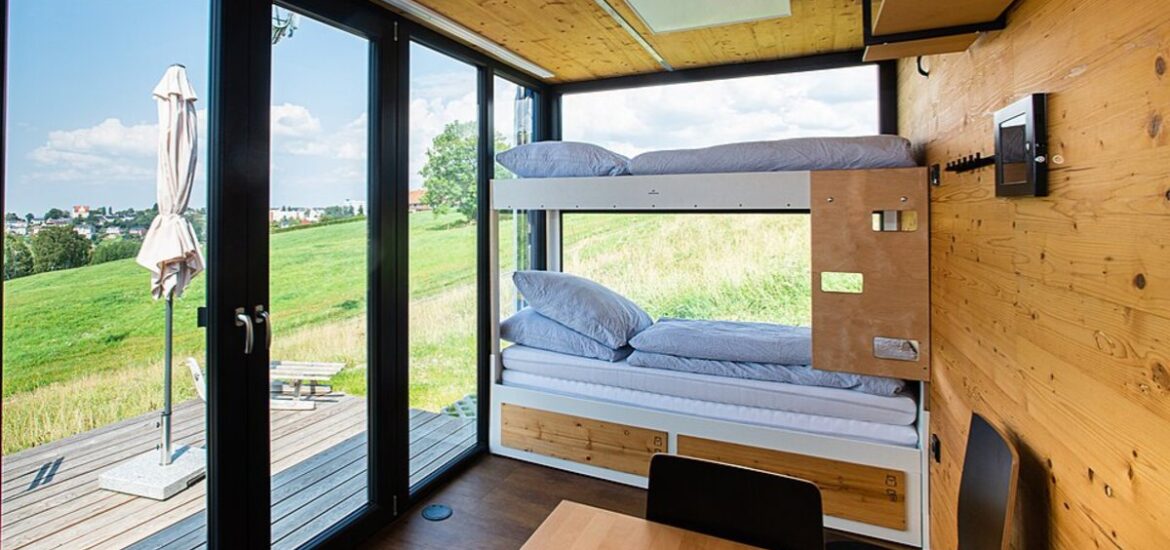[Image Placeholder: Beautiful container home with a modern interior in Nairobi’s suburbs]
In the vibrant heart of East Africa, Nairobi is undergoing a quiet but powerful housing revolution. A shift that blends innovation, sustainability, and affordability—custom container interior design.
Once considered only suitable for temporary housing or storage, shipping containers are now being repurposed into stunning homes with creative interior designs that reflect personal style and functional living. And it’s not just a fad. With rising real estate costs, increasing environmental awareness, and the need for rapid housing solutions, custom container homes in Nairobi are here to stay.
So, what exactly is container interior design? And why are so many Nairobians embracing this new way of living? In this blog, we’ll dive deep into this fascinating world—from design ideas and space-saving hacks to real-life examples and tips on getting started.
What is Custom Container Interior Design?
Container interior design refers to the art and science of designing the inside of a shipping container to create a comfortable, stylish, and functional living space. It involves transforming the raw, metallic shell of a container into a cozy home that rivals any conventional house.
But what makes it custom? It’s all about personalization. From the layout to the materials, lighting, furniture, and color scheme—every element is tailored to suit your taste and lifestyle.
Whether you want a minimalist studio in Kilimani, a boho-inspired bungalow in Karen, or a scandi-style smart home in Westlands, your container home can reflect exactly who you are.
Why Nairobians Are Choosing Container Homes
Nairobi is a city of contrasts—buzzing urban life, lush green suburbs, growing tech hubs, and deeply rooted traditions. It’s this eclectic mix that makes container living such a perfect fit for the city.
Here are a few reasons why:
1. Affordability
Let’s face it—land and construction costs in Nairobi are sky-high. Building with containers slashes costs by up to 40%, depending on the design and materials used.
[Image Placeholder: Side-by-side cost comparison of a traditional house vs. container home]
You can own a stylish, two-bedroom container home for the same price as a one-bedroom apartment in the city center.
2. Speed of Construction
Conventional construction can take months, even years. A container home? You could be moving in within 8 to 12 weeks. Time saved is money saved.
3. Eco-Friendly Living
Containers are recycled materials. Instead of letting them rust away at the port, they’re turned into homes—a win for your wallet and the planet. Add solar panels, rainwater harvesting, and energy-efficient fixtures, and you’ve got a sustainable lifestyle.
4. Mobility and Flexibility
Want to move from Ruaka to Ngong? With proper planning, your container home can move with you. The modular nature allows for expansion or reduction based on your needs.
The Design Possibilities Are Endless
One of the most exciting things about custom container homes is the incredible variety of interior design options. Here’s a breakdown of some of the most popular styles among homeowners in Nairobi:
1. Minimalist Elegance
Less is more. This design philosophy is perfect for small spaces like containers. Think clean lines, neutral palettes, built-in storage, and multipurpose furniture.
Key features:
- White or light grey walls to expand the visual space
- Floating shelves and hidden cabinets
- Foldable tables or wall-mounted desks
- Floor-to-ceiling glass doors to bring in light
[Image Placeholder: Minimalist interior of a container home with natural light and compact furniture]
2. Afro-Boho Vibes
Celebrate culture and comfort. Afro-Bohemian design is all about vibrant colors, earthy textures, and handmade décor pieces.
Key features:
- Bold patterned throws and cushions
- Rattan or sisal furniture
- Indoor plants and natural wood finishes
- Accent walls with African murals or art
[Image Placeholder: Afro-boho style container home interior in Nairobi with colorful fabrics and artwork]
3. Industrial Chic
Let the container’s steel structure shine! Industrial design embraces rawness—perfect for modern urban dwellers.
Key features:
- Exposed pipes and beams
- Concrete floors or faux finishes
- Edison bulb lighting
- Metal + wood combo furniture
4. Scandinavian Simplicity
Clean, calm, and comforting—Scandi style is growing in popularity across Nairobi for its serene and stylish feel.
Key features:
- Soft pastel palettes or monochrome tones
- Plush textures and layered lighting
- Warm wood accents
- Open, uncluttered spaces
Space-Saving Interior Design Hacks
Let’s be honest: containers are compact. Most standard ones are about 8 feet wide and 20 or 40 feet long. So, smart design is essential.
Here are a few tips to maximize every inch:
Use Vertical Space
Install tall bookshelves, wall-mounted storage, or vertical gardens. The higher you go, the more space you free up below.
Go Multi-Functional
A sofa that turns into a bed. A kitchen counter that doubles as a dining table. A bench with storage underneath. Smart furniture is your best friend.
Mirror Magic
Mirrors reflect light and make the space feel bigger. Place them opposite windows or doorways.
Open-Plan Living
Break down walls. Open-plan layouts create flow and reduce the feeling of confinement.
Sliding Doors
Standard hinged doors take up space. Sliding barn-style or pocket doors are perfect for container interiors.
Real Container Homes in Nairobi: Inspiring Examples
1. Studio Home in South B
A young professional transformed a 20ft container into a self-contained studio apartment complete with a kitchenette, bathroom, and work area. The cost? Around KES 600,000. The interior is minimalist with a Scandinavian twist—white walls, pine finishes, and pops of pastel green.
2. Family Home in Karen
This impressive 3-bedroom family home is built using three 40ft containers. The interiors reflect Afro-boho elegance with custom woven furniture, reclaimed timber floors, and solar-powered lighting. Despite the large space, clever use of lighting and airflow keeps the home energy-efficient.
[Image Placeholder: Exterior view of a multi-container home in Nairobi with a landscaped garden]
3. Airbnb in Lavington
A container Airbnb with an industrial design style has been attracting local and international guests alike. Metal-framed windows, cement-finished walls, and vintage furniture give it an urban edge. The host earns over KES 80,000/month—a smart investment indeed!
Custom Interior Design Elements You Shouldn’t Skip
When designing your container home in Nairobi, there are a few must-have elements that can take your interior from good to wow.
Natural Lighting
Windows, skylights, and glass doors will flood your home with daylight—making it feel spacious and reducing power usage.
Insulation
Containers get HOT under the Nairobi sun. Proper insulation (e.g., rock wool or spray foam) is essential for comfort.
Quality Flooring
Laminate wood, polished concrete, or ceramic tiles are all popular options. Go for something durable and easy to clean.
Smart Storage
Custom-built wardrobes, under-bed drawers, and kitchen organizers make living easier in small spaces.
Ventilation
Cross ventilation is critical. Install louvered windows or vents to keep fresh air circulating.
Working with Local Designers in Nairobi
One of the best things about container interior design is that it’s not a solo journey. Nairobi is home to talented designers, architects, and fabricators who specialize in container conversions.
When hiring a designer:
- Check their portfolio for previous container projects.
- Discuss your lifestyle needs—how many people will live there? Do you work from home?
- Ask about materials sourcing—can they use local, sustainable options?
- Set a clear budget and timeline.
Some reputable container interior designers and fabricators in Nairobi include:
- EcoSpace Kenya
- MobiHub Structures
- SmartBox Containers
- FabContainers Africa
[Image Placeholder: Designer working on a container floor plan with clients in Nairobi]
The Legal Side: Do You Need Permits for a Container Home?
Yes, you do.
Just like any building in Nairobi, a container home requires:
- Building plan approvals from Nairobi County
- Land use consent (especially if you’re setting up on agricultural or leasehold land)
- Environmental Impact Assessment for larger setups
Work with a registered architect or planner to navigate this process. It’s smoother than you might think—especially for smaller or mobile units.
Estimated Costs for Interior Design
Here’s a rough estimate to give you an idea of budgeting:
| Item | Estimated Cost (KES) |
|---|---|
| Container Purchase (20ft) | |
| Container Purchase (40ft) | |
| Interior Insulation & Cladding | |
| Plumbing & Electrical | |
| Custom Furniture | |
| Kitchen & Bathroom Fixtures | |
| Design & Labour |
Note: These vary based on finishes and preferences.
Final Thoughts: A Lifestyle, Not Just a Trend
Custom container interior design is more than a housing alternative—it’s a lifestyle. One that reflects creativity, resourcefulness, and a desire to live more consciously. Nairobi, with its dynamic spirit, is the perfect place to embrace this movement.
Whether you’re a first-time homeowner, a developer looking to create eco-living communities, or just someone curious about tiny living—container homes are a real and exciting option.
And the best part? You don’t have to sacrifice comfort or beauty. With the right design, your container can become a haven that’s as stunning on the inside as it is practical on the outside.
Need help bringing your dream container home to life in Nairobi?
We offer expert container conversion and interior design services that suit your budget, lifestyle, and aesthetic.
[Contact us today for a free consultation.]
[Image Placeholder: Happy family inside a beautifully designed container living room in Nairobi]

